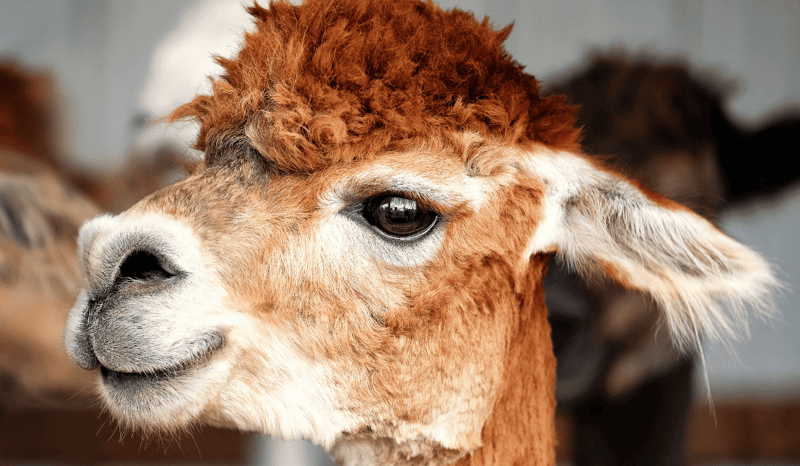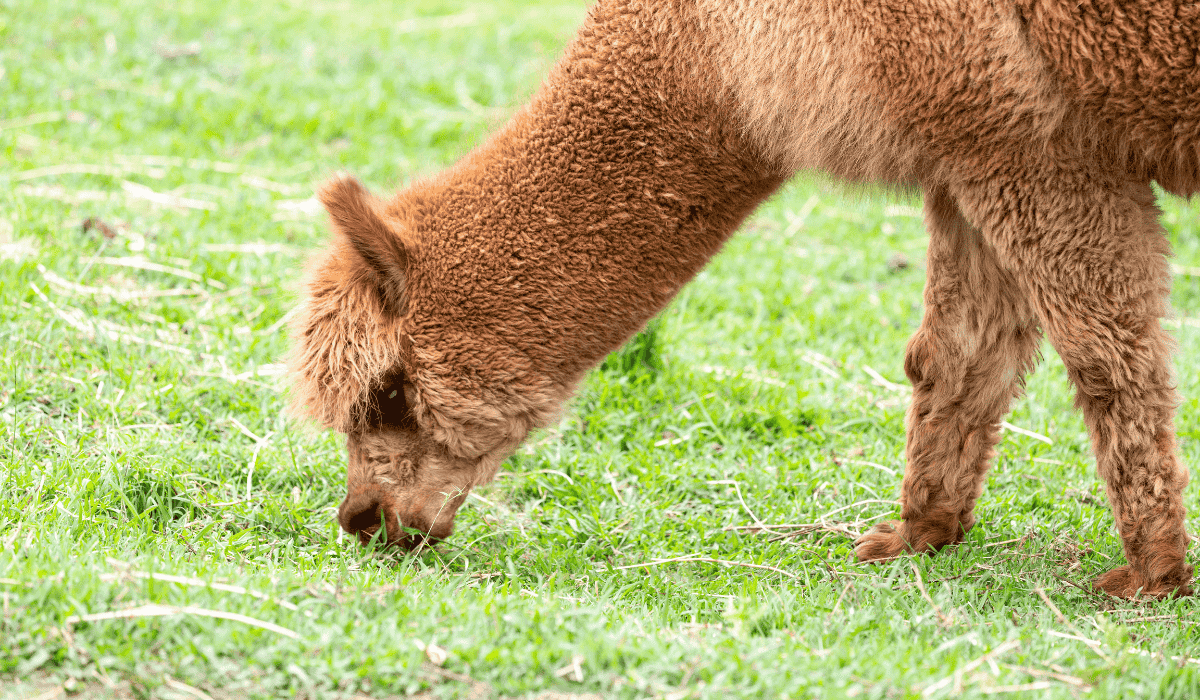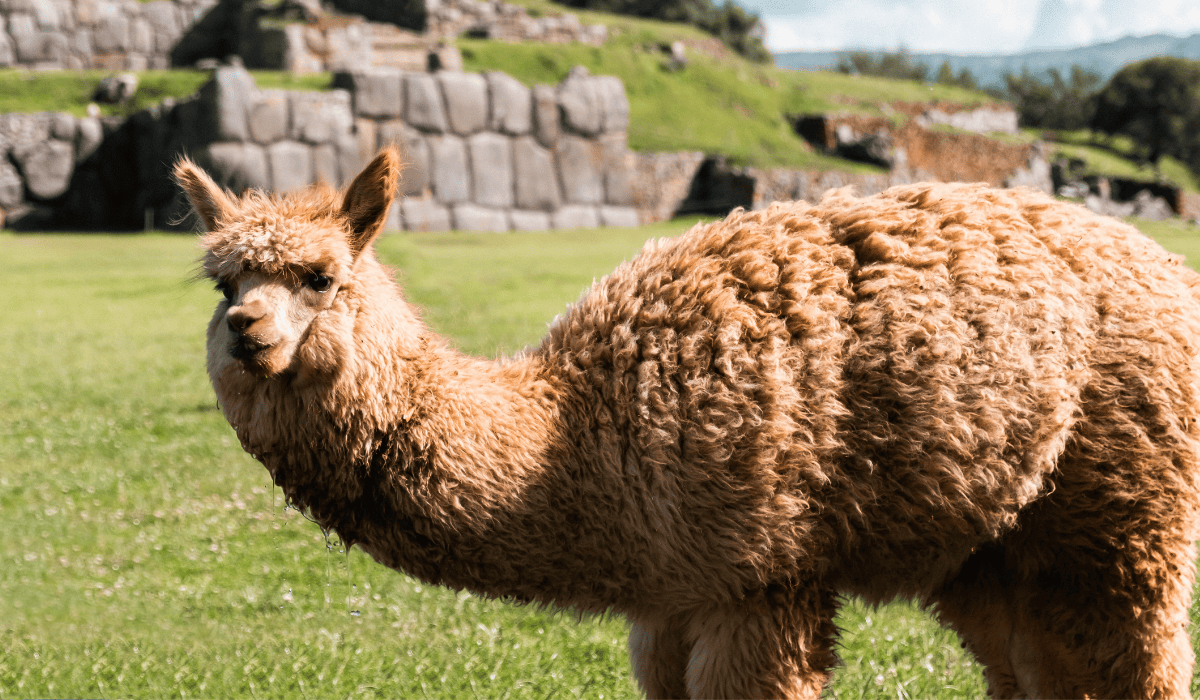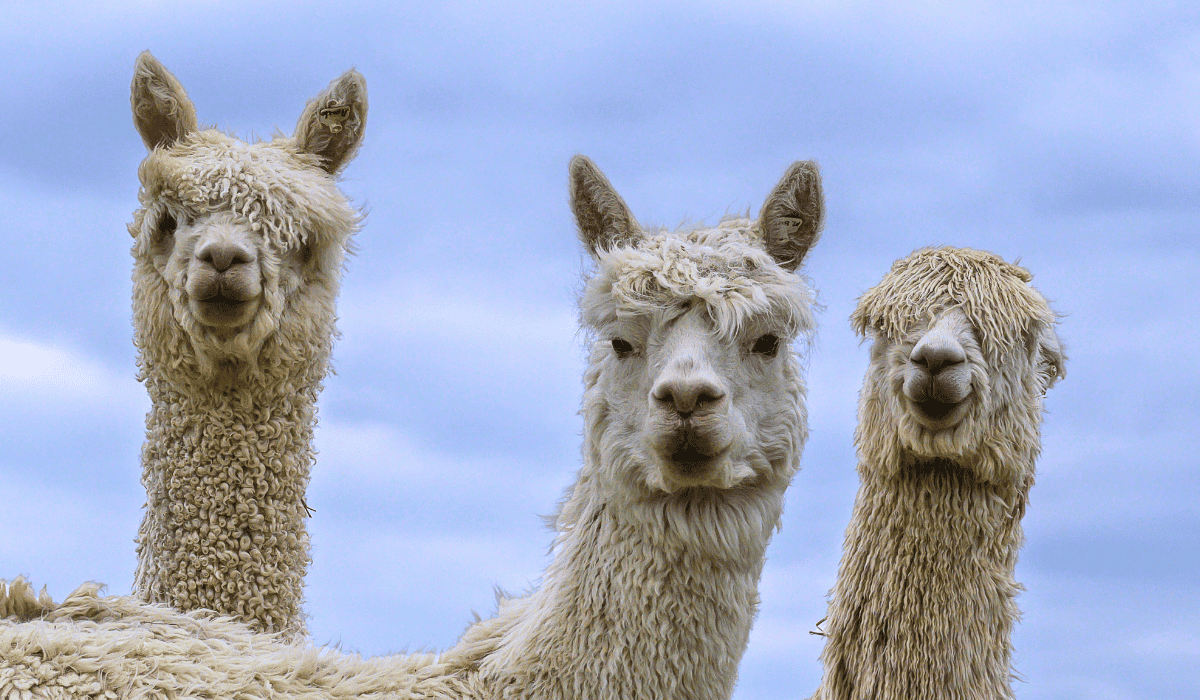
Think you know alpacas? Discover the differences between alpacas and llamas, what they eat, how long they live, and more in this guide.
When most people think of alpacas, they imagine fluffy faces, long necks, and soft wool sweaters sold in artisan markets. But behind the cuteness and cozy garments lies an often-overlooked truth: alpacas are sentient animals who deserve protection, not exploitation.
Whether in the fashion industry or the pet trade, alpacas are frequently commodified for their looks, their wool, and their docile nature, but they should never be treated as products or possessions.
Let’s break down some key alpaca facts and why these animals deserve respect.
What Is an Alpaca?
Alpacas are domesticated members of the camelid family, closely related to llamas, vicuñas, and guanacos. Native to South America—primarily Peru, Bolivia, and Chile—alpacas have been bred for thousands of years for their soft wool. With their calm temperament and expressive eyes, they’ve become internet darlings and tourist attractions. But don’t let the Instagram photos fool you: alpacas are complex herd animals who thrive in natural, spacious environments with other alpacas.
What Do Alpacas Eat?

Alpacas are herbivores with a diet that mainly consists of grass, hay, and other low-protein vegetation. They have a three-compartment stomach that helps them efficiently digest tough plant materials. In the wild or on open pastures, they’ll graze throughout the day, helping maintain a healthy ecosystem, and they’re surprisingly gentle grazers, pulling up grass without damaging the root system.
Alpacas also need access to fresh water and salt or mineral licks to stay healthy. When exploited for their wool at any scale, they may not receive the proper diet or care, which can lead to illness or malnutrition.
Llama vs. Alpaca: What’s the Difference?
People often confuse llamas and alpacas, but they’re distinct animals:
- Size: Llamas are much larger than alpacas, standing about six feet tall compared to an alpaca’s five feet (on average).
- Fur: Alpacas have softer, finer wool, while llamas have coarse outer hair that humans typically exploit for rope and rugs.
- Personality: Alpacas are generally more timid and shy, while llamas can be more confident.
- Use: While llamas have traditionally been used as pack animals, alpacas are primarily bred for their fleece.
Both animals, however, are exploited in farming and tourism—and neither should be treated as pets or props.
What’s a Baby Alpaca Called?
A baby alpaca is called a cria (pronounced cree-ah), derived from the Spanish word for “baby.” Crias are typically born once a year and rely on their mothers for milk and warmth. Just like puppies or kittens, these babies are playful and social—and just like them, they deserve to grow up free from harm, not in industrialized farms or petting zoos.
What Is a Peruvian Alpaca?
Peruvian alpacas are a type of alpaca originating from—you guessed it—Peru, which is home to about 80 percent of the world’s alpaca population. In Peru, alpaca farming is a significant part of the economy, with wool products exported globally. Unfortunately, many alpacas endure inhumane shearing practices, poor veterinary care, and neglect. The demand for alpaca wool—and fashion items like alpaca socks, sweaters, and yarn—fuels an industry where animals suffer for profit.
How Do Alpacas Communicate?
Alpacas are very expressive—even without words. They use a variety of body language and vocalizations to communicate with each other:
- Humming: A common soft sound alpacas make to express curiosity or contentment.
- Clucking: Mothers often cluck to communicate with their cria.
- Alarm call: A high-pitched squeal or shriek warns others of danger.
- Body posture: Ears back or raised tails can indicate agitation or stress.
Their ability to bond with one another and form social hierarchies proves they’re not just passive animals. They’re deeply social and emotionally intelligent.
Can You Have a Pet Alpaca?
Short answer: No. While some people try to keep alpacas as pets, these herd animals are not domesticated in the way dogs or cats are. They need the companionship of other alpacas, ample grazing land, and specialized care. Isolating a single alpaca or forcing them into a backyard setting is a recipe for loneliness, stress, and health problems.
Wild or semi-wild animals like alpacas should never be bought or sold as pets. Their needs cannot be fully met in a household—no matter how well-intentioned.
What Is Alpaca Farming?
Alpaca farming refers to the breeding and raising of alpacas, typically for their wool or to sell them into the pet or tourism industries. While some small-scale farms claim to be “ethical,” there’s no such thing when it comes to commodifying sentient beings.
Shearing can be traumatic and violent, with reports of alpacas being restrained, screamed at, or injured during the process. In commercial farms, alpacas are often treated as wool-producing machines, not as animals with individual personalities and needs.
How Long Do Alpacas Live?
Alpacas live an average of 15 to 20 years, which is a long commitment for anyone considering them as pets (again, please don’t). In industrial settings, however, they often don’t get the chance to live full, healthy lives. Instead, they’re repeatedly sheared, overbred, and slaughtered once they’re no longer profitable.
The Truth About Alpaca Wool, Socks, and Sweaters

Alpaca wool is marketed as a luxury, cruelty-free fiber, but that’s far from the full story. Undercover investigations have shown terrified alpacas restrained and mishandled during shearing. In mass production settings, animals are treated with little regard for their suffering, all for the sake of producing alpaca sweaters, socks, and yarn that end up in our closets.
If you’re looking for soft, sustainable clothing, skip the alpaca wool and opt for plant-based materials instead—like organic cotton, bamboo, hemp, or Tencel. Better yet, shop secondhand or from truly animal-free, ethical brands.
Alpacas Deserve Better
Alpacas are sensitive, intelligent, and social animals who deserve to live free from exploitation. Whether it’s for fashion, novelty, or companionship, commodifying these animals only causes harm. At World Animal Protection, we’re working to shift the world away from industries that treat animals like products—and toward one where they’re respected as individuals with their own lives to lead.
By rejecting alpaca wool and never treating alpacas as pets or entertainment at petting zoos, you’re taking a stand for animal protection—and helping these unique animals live the peaceful lives they deserve.
Want to protect more animals? Join World Animal Protection’s Animal Champions community for ways to get started.
